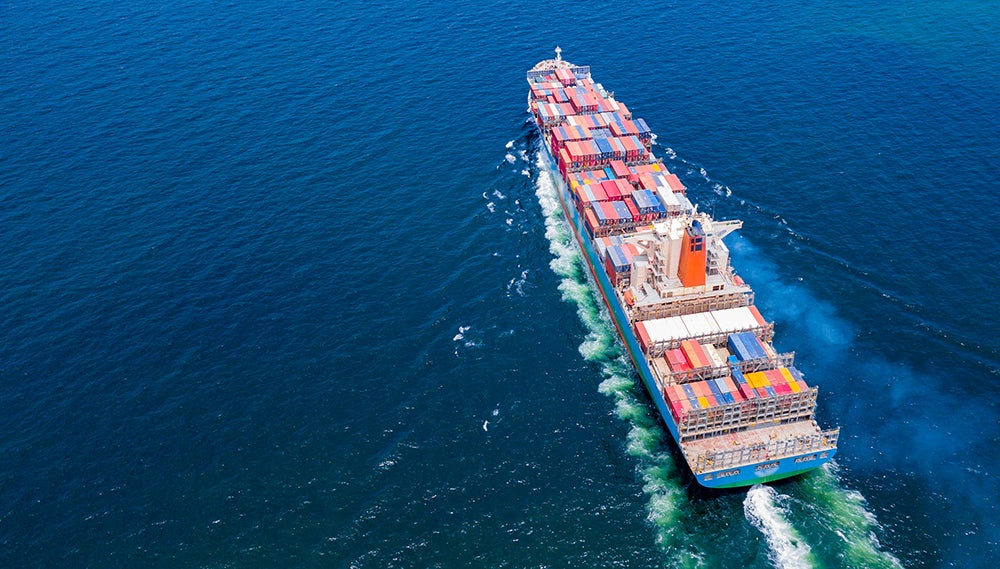The flip side of the boom in the home and design industry over the past year and half is the global shipping crisis. Demand has never been higher, and wait times never longer. There was a preliminary hope that the rollout of vaccines would help ease the logistical nightmare as consumers began spending less on goods and more on services and experiences and ports and manufacturers started to return to a pre-pandemic staffing levels. But the tangled web that was woven last year is not coming undone so easily. Experts are now saying that it will be at least the first quarter of 2022 before shipping lead times will stabilize.
Why will it take so long? There are three major reasons, says journalist Rachel Premack, who has reported extensively on the crisis for Business Insider. “We’re continuing to see a remarkable increase in demand, coupled with a shortage of shipping containers and massive congestion at ports,” she explains. “The reason we’re seeing 2022 as the point when this calms down a bit is that people are expecting that demand will continually decrease as society goes back to normal. Once that happens, ports can work through the existing backlog of containers.”
The shortage of shipping containers stems from the fact that 2019 was a comparatively poor year for trade (largely due to strained diplomatic relations between the U.S. and China), which consequently led to a curb in production of new shipping containers in the lead-up to 2020. Once the pandemic hit, factories shut down and manufacturers—uncertain of how the virus would affect international spending on goods—extended the pause in container production through the first half of 2020. As demand exploded instead of shrinking, the dearth of available containers caused the price of shipping to skyrocket, with some brands paying up to 10 times more to import the same goods as before. Speaking to Business of Home in May, Gary Pettitt, the CEO of trade furniture brand Seasonal Living, said that his company had to implement a 5 percent container surcharge fee to cover the new shipping costs.
The backlog at international ports is a multipronged issue, caused by the canceling of many ships meant to sail in March 2020, compounded by a challenge that certainly won’t be solved in the next six months: increasingly large container ships, and ports that haven’t been refurbished to accommodate the behemoth vessels. According to shipping insurer Allianz Global Corporate & Specialty, the capacity of the biggest ships over the past 50 years has increased 1,500 percent, and has doubled in the past decade alone.
“These massive ships can deliver more per voyage, but ports like Los Angeles or Long Beach—they weren’t made to accommodate ships of that size,” says Premack. “Look at what happened earlier this year with the Ever Given, [which stalled for six days and blocked traffic] in the Suez Canal. These manufacturers thought bigger ships would be better for the bottom line, but the ports weren’t renovated to handle them.”
Meanwhile, the ports that have undertaken dredging and other renovations to make way for larger ships are incurring huge costs. The Panama Canal expanded in 2016, to the tune of more than $5 billion. Similarly, the Port Authority of New York and New Jersey spent $1.7 billion over six years to raise the Bayonne Bridge an additional 215 feet to allow passage of bigger ships. It’s a slow process, and one that will surely continue to impact global shipping for years to come, even when lead times revert back to something resembling pre-pandemic levels.
Ultimately, the crisis will really only ebb as demand for consumer goods does. “The import level we’ve seen in the past year is astronomical and not something that our infrastructure can handle,” says Premack. Still, she says the broad expectation is that ports and ocean carriers will be able to catch up on the backlog in early 2022, with a return to some semblance of normalcy by next spring. “That’s the hopeful estimate,” she adds. “Patience is definitely key at the moment. It’s a chaotic and unprecedented time.”
Homepage photo: ©Photo Gallery/Adobe Stock





























